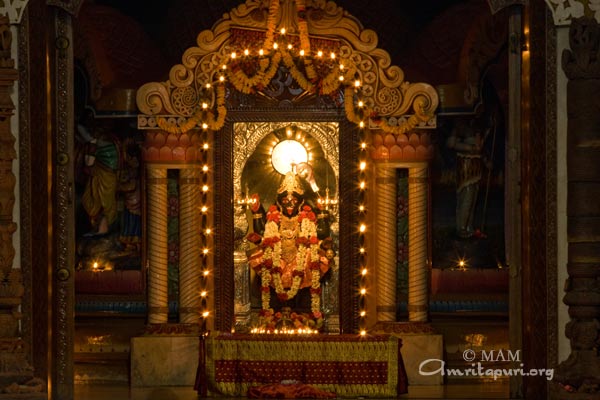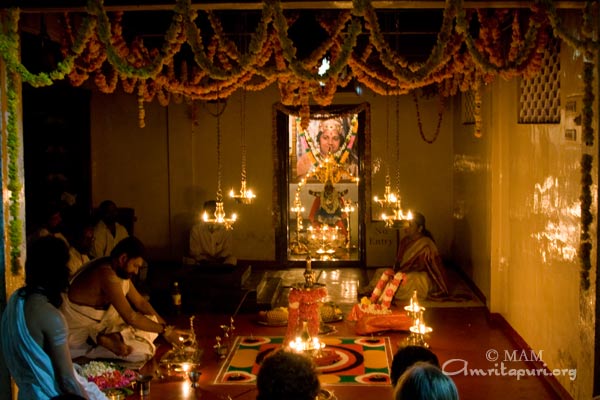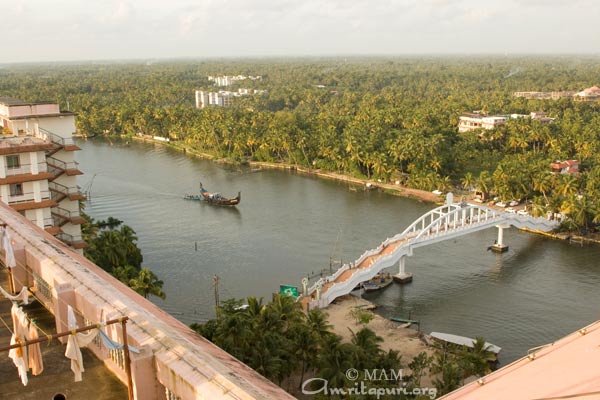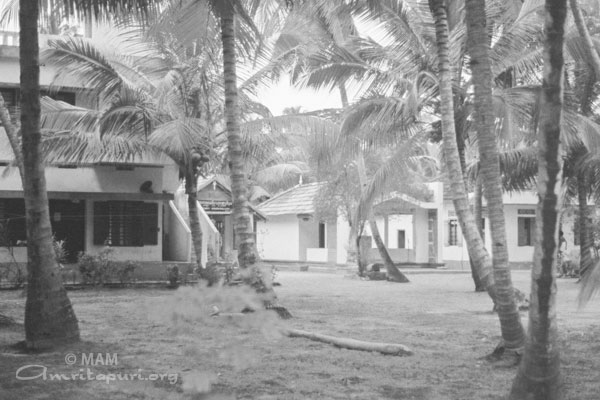In the beginning the ashram was simply Amma’s family’s house, actually in the cow shed. The handful of brahmacharis slept on the sand under the stars. Amma had a small hut built next to the parents’ house, which doubled as a kitchen, in which she slept with the earliest female disciples. Darshan took place in the family cows’ cowshed that Amma’s father had allowed to be converted into a small temple. This first temple still exists today; it is known as the Kalari, is now used for the conducting pujas.
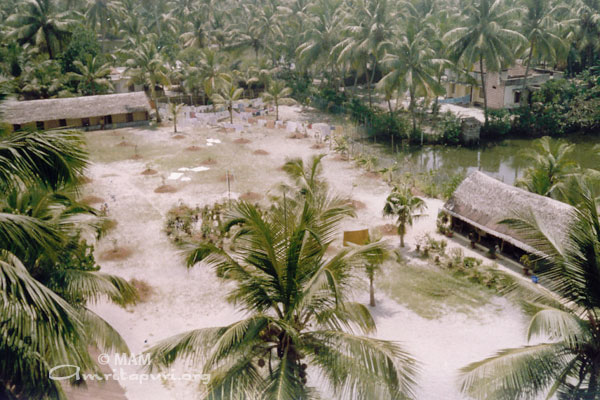
Gradually, huts were added near the parents’ house for the brahmacharis and a proper, yet humble, room was constructed for Amma. This simple room is still where Amma stays today.
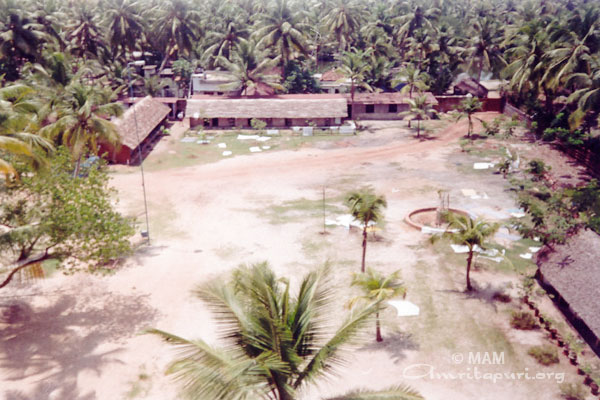
As the number of devotees coming for Amma’s darshan grew bigger and bigger, it became necessary to construct a large darshan hall. It was then that the beautiful Kali Temple was erected. It was the first big cement structure to be built and took five years to finish – from 1988 to 1992 – as the financial means of the ashram were still very modest at the time. The Kali idol in the temple, was crafted in Calcutta as per Amma’s instructions. Mother Kali is the destroyer of the ego.
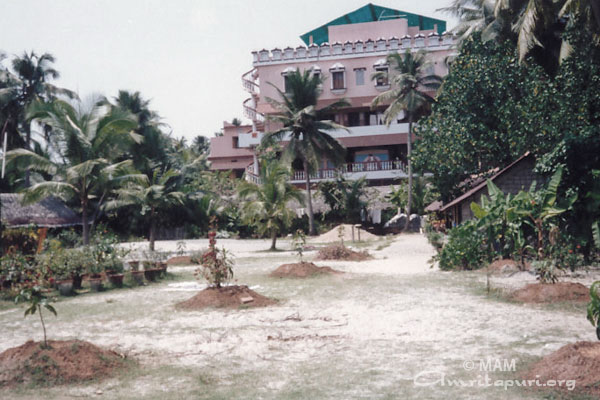
From 2000 onwards, even that temple became too small for the nights with large crowds, and an enormous hall was erected behind the temple. It is today the largest such hall in Southern India, with 30,000 sq. feet and no pillars to block the view. This is where Amma sings bhajans every night and holds darshan regularly now. Indeed, except for the early Kalari which remains intact, the Amritapuri of today bears little physical resemblance to the one of the early days…
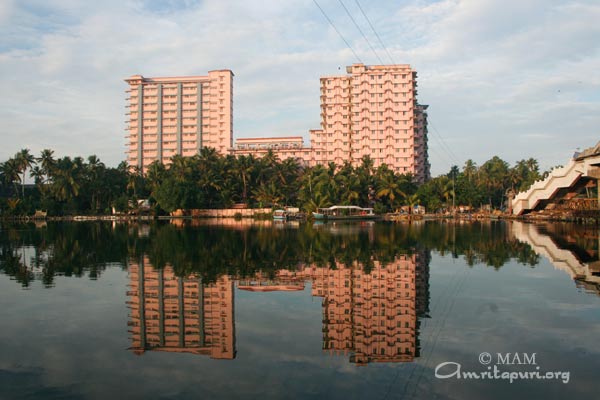
Today, Amritapuri is a city with towering buildings of flats for householders and visitors, hostels for students who study at the ashram college across the river, big dinning halls, many offices and departments, a hospital…. But no matter its size, it is still very much all filled with Amma presence, who’s hand is in each decision. It is still very particular to see that it is run according to the ancient traditions of the holy land of India.
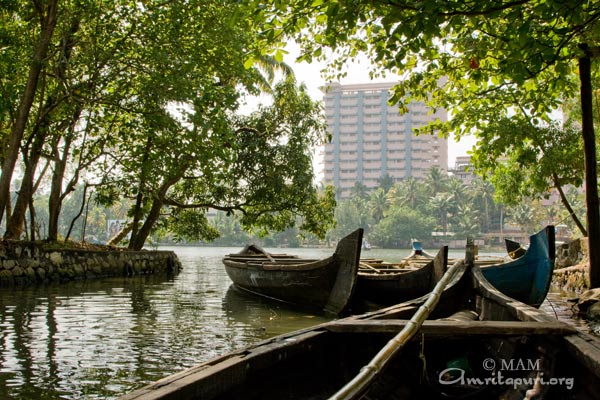
All the ashram work is attended to by the residents and visitors themselves. And Amritapuri is looked upon by Amma’s many devotees as their spiritual home and as a fertile field where noble spiritual qualities can be abundantly cultivated, and the fruit of God-realization reaped.
